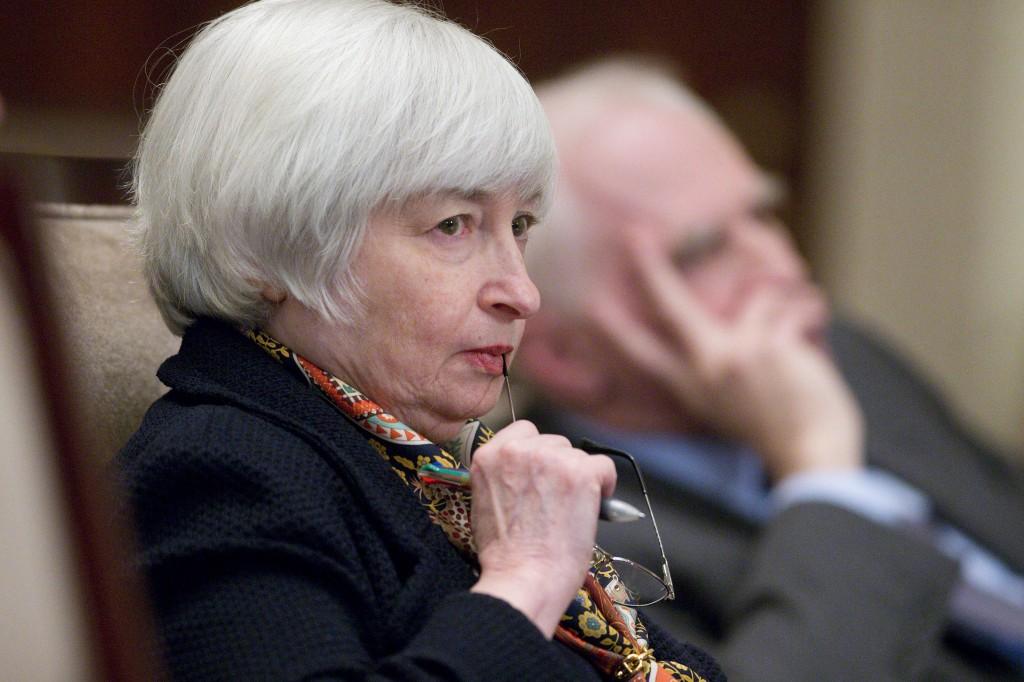As expectations of an interest rate hike by the Federal Reserve continue to rise, Investor Magazine examines the approaches of Alan Greenspan, arguably the most influential Chair of the Federal Reserve, and the current Chairman Janet Yellen. The Fed are legally obligated to pursue two potentially conflicting targets: “stable prices” and “maximum employment.” Those who focus primarily on squashing inflation are known as hawks, and those that give a higher weight to boosting employment and G.D.P. growth are known as doves.
Alan Greenspan is perhaps one of the most well-known Chairmen of the Board of Governors of the Fed Reserve, serving an unprecedented 5 terms as Chairman between 1987 – 2006 during Reagan, Clinton and Bush’s presidencies.
Traditionally seen as a hawk; Greenspan was criticized for strongly pursuing inflation when instead he might have turned his considerable power towards attaining full employment or economic growth. In fact, Greenspan broke away from his hawk stance in 2000, when the dotcoms burned out, and again in 2001, after the World Trade Center was attacked.
Perhaps a better view is that Greenspan was hawkish to begin with then became dovish as his reign went on; his dovish approach to Federal policy lasted well into the 1990s.
The past two chairmen of the Fed, Alan Greenspan and Ben Bernanke, both fit the description of doves disguised as hawks. Aligned with conservative Republican Administrations, they both entered the job talking about the virtues of price stability and yet, for much of their time as Chair, they both pursued relaxed money policies, which consisted, in part, of keeping interest rates at very low levels and pumping money into the financial markets.
Janet Yellen, the current Chairman of the Federal Reserve, became vice-chair in 2010 and chair in 2014. In comparison to Alan Greenspan, upon ascending to her position she was seen as a dove by most on Wall Street; when President Obama nominated her last year to head the Fed, bond king Bill Gross told Bloomberg TV, “She’s a dove with a capital D” .
Her sympathetic attitude to unemployment led to the suggestions that she would be taking a more dovish approach; in a speech back in February, she noted that long-term unemployment, which has risen sharply since 2008, is “devastating to workers and their families …. The toll is simply terrible on the mental and physical health of workers, on their marriages, and on their children.”
However, it has more recently been argued that she is more of a “hawk in a dove’s clothing”
It is now becoming clear that Yellen may not be a true dove—that is, that she will consistently put fighting unemployment above keeping a lid on inflation: “I’ve said repeatedly, and I want to say again, that if events surprise us, and we’re moving more quickly toward our objectives … we have the flexibility to move”
Yellen pushed hard for rate rises in 1996 to choke inflation, and has made it clear that she may do so again when the moment comes. The element of flexibility is arguable her strongest quality – she is someone who is willing to change their mind when the facts change.
Strong jobs and spending data since the beginning of June are not expected to be enough to bring about a rate hike at the US central bank meeting this week, That leaves only four policy meetings remaining after this for a move: July, September, October and December.
by Miranda Wadham




